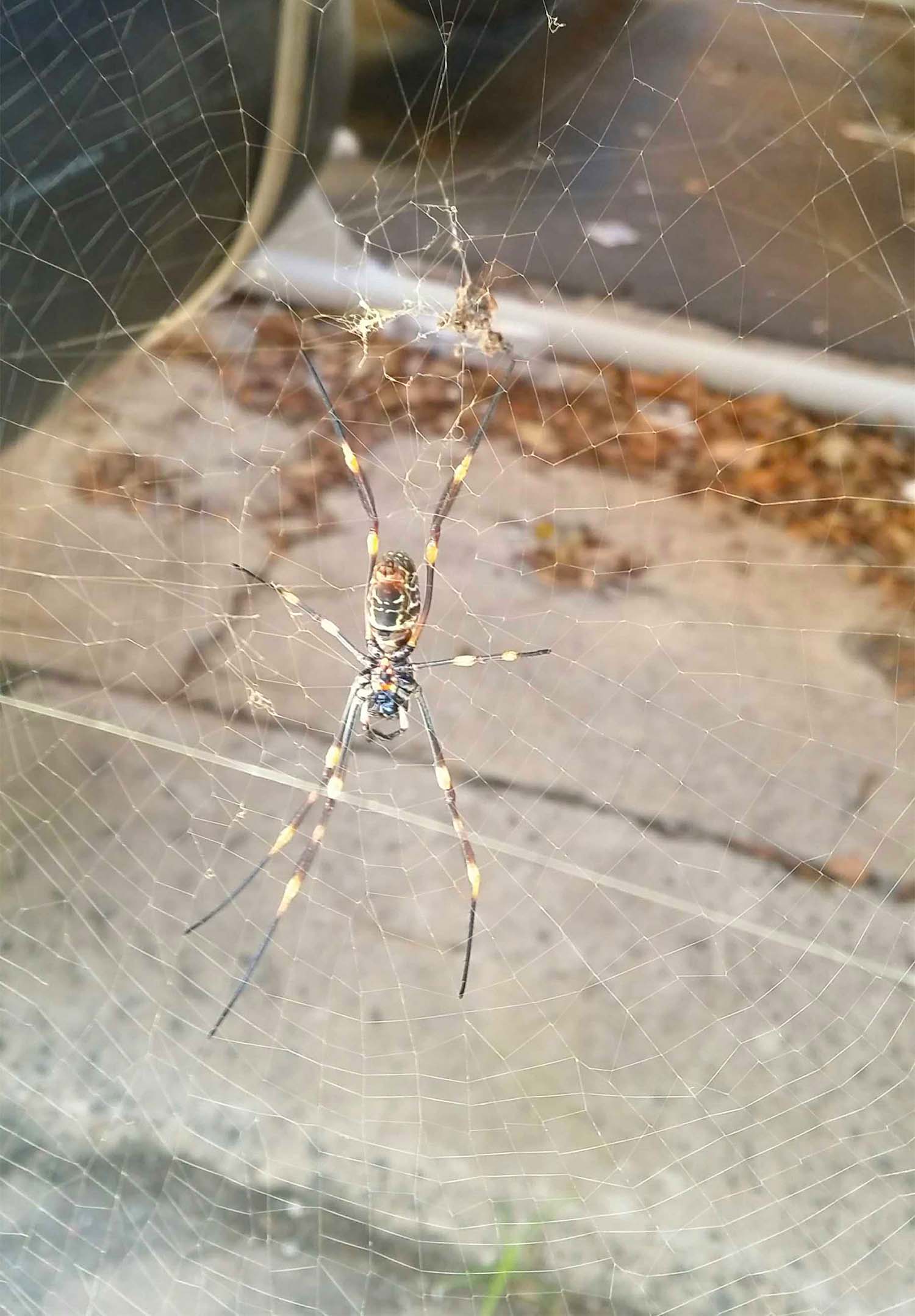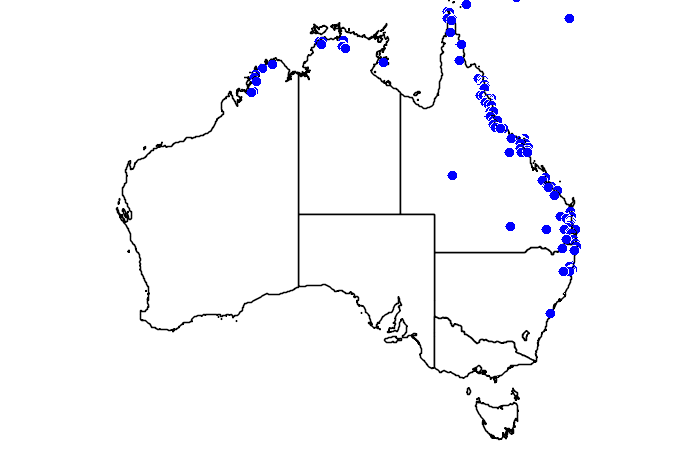Behaviour
Diet
Insects including flies, beetles, locusts, moths and cicadas which are caught in a sticky, wheel-shaped web strung between trees and shrubs. The web’s yellow colour attracts insects and it is designed so that the slightest vibrations from trapped insects are transmitted to the spider. It is very strong and can even trap small birds and bats! Victims are wrapped in silk before being carried off to be eaten straight away or hung nearby for later. Small black and silver “pirate” spiders (often called Quicksilver Spiders) also inhabit the web, feeding on small trapped insects.
Movement
The female occupies the web continuously, usually sitting in the middle, and continually maintains it. She vibrates the web to distract potential predators, and also creates a "barrier network" of silk threads on one or both sides of the web to deter bird attacks. Males sit on the outskirts of the web.
Breeding
Often several males will sit on the outskirts of a web, waiting for an opportunity to mate with the female. After mating, the female buries her single egg sac (which can contain over 2,000 eggs) in the leaf litter or covers the egg sac in earth and litter.
Field Guide
Improve your identification skills. Download your Giant Goldern Orb Spider guide here!





